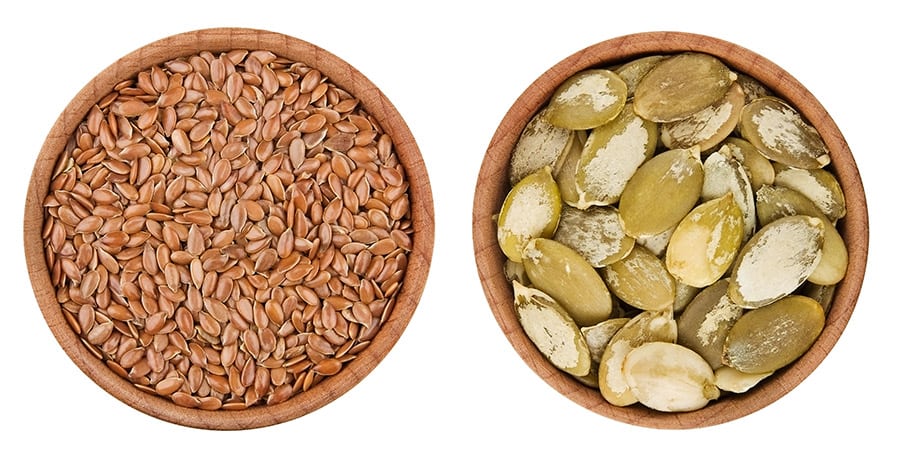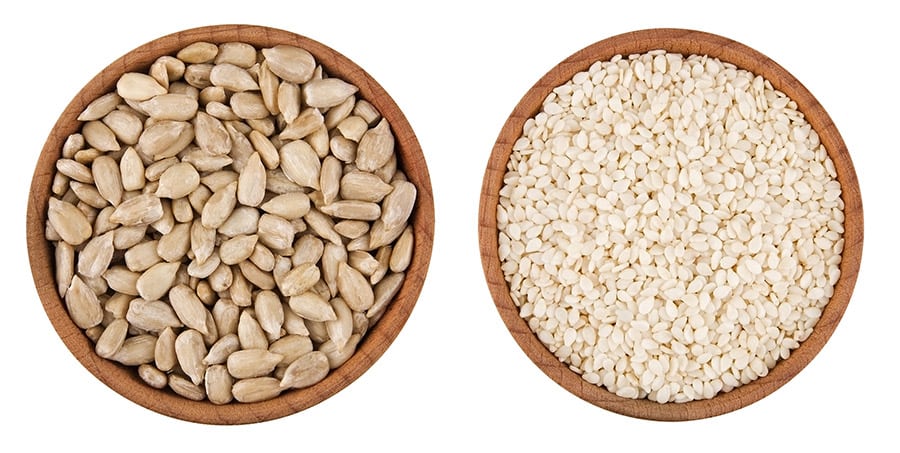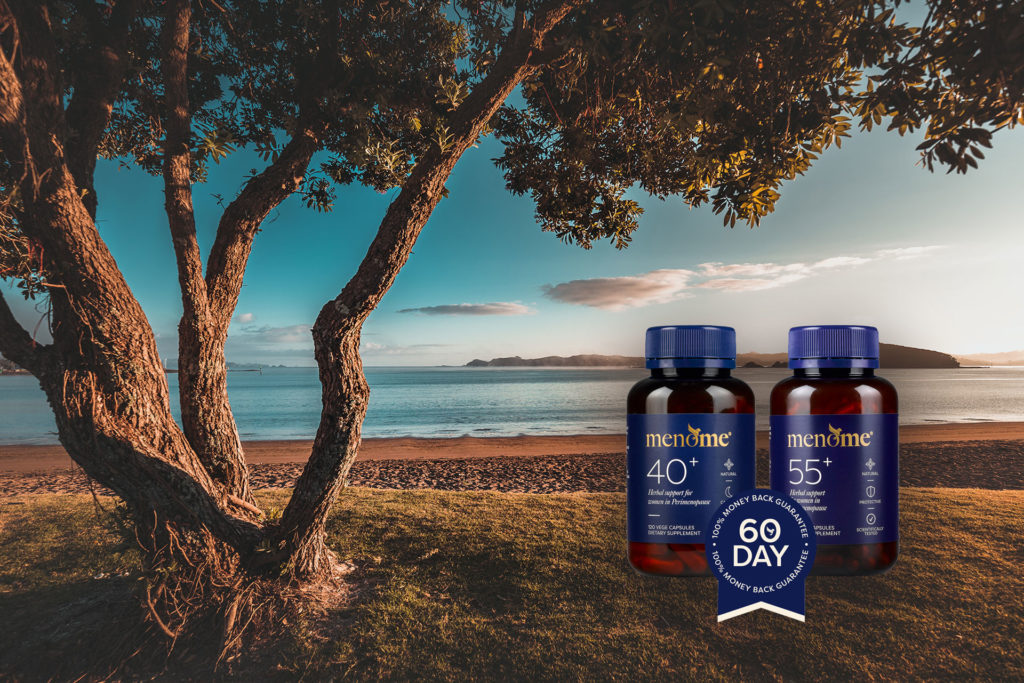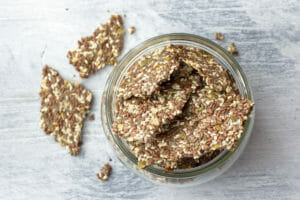How To Do Seed Cycling During Pre-, Peri- & Post-Menopause & Why You’ll Want To
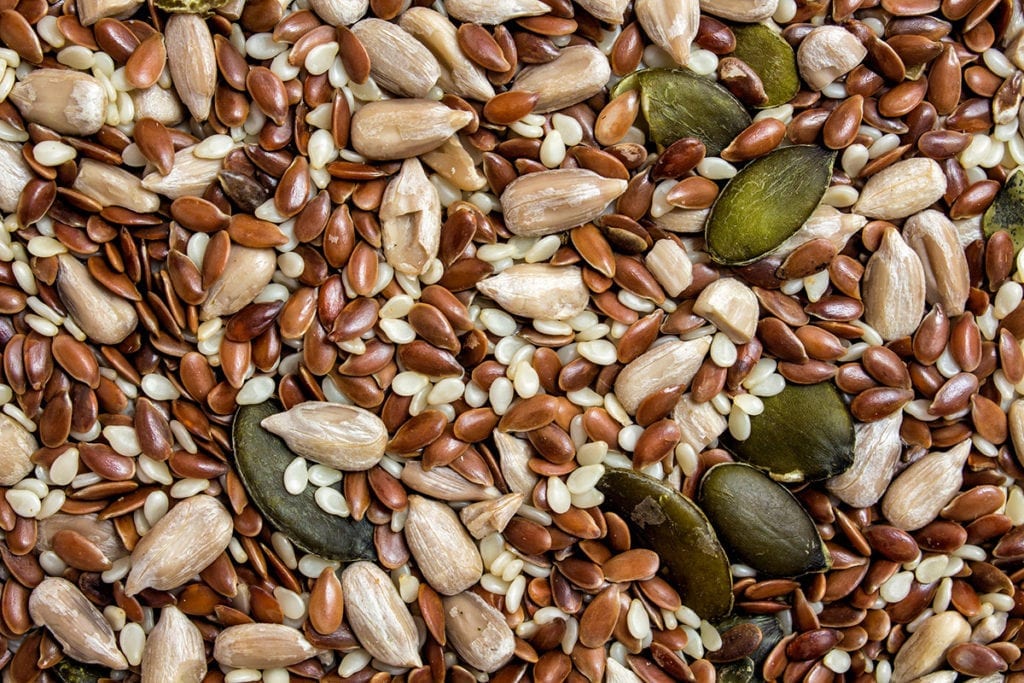
Seed cycling or seed rotation – have you heard of them?
Indeed, seed cycling and its sister, seed rotation, are having a big moment in wellness circles lately.
Why?
Because they’re a simple, all-natural, hormone free, non-medicalised (and we’re all about that! 😀) hormone balancing tool.
Although the science is limited there are some small studies that show great promise. Additionally, there are quite a few showing seed cycling is a good support for PCOS, so share this with your gal posse.
So, what exactly is seeding cycling?
Basically, it’s a food-based, gentle, natural helper for aiding hormone balance with roots based in Chinese medicine and the food as medicine philosophy. So you gotta love that, right?
Seed cycling is an incredibly simple, all-natural, hormone free hormone balancing tool. Click To TweetAnd the raw ingredients are – as you may well have guessed – seeds.
The recommended seeds:
- Pumpkin
- Sesame
- Sunflower
- Ground flaxseed (fresh)
How seed cycling works:
Pre and perimenopausal
For those who are still getting their period, the protocol follows eating the seeds depending where you’re at in your cycle.
- Day 1-14: flax and pumpkin
- Day 15-28: sesame and sunflower
Menopausal/post-menopausal
You can begin by adding the seeds to your diet at any time.
Firstly, go with the flax and pumpkin combo for one to two weeks followed by one to two weeks of the sesame and sunflower.
In doing so, you’ll be getting is a zip-a-de-doo-dah dose of the essential oils, vitamins and minerals that seeds deliver. In addition, some women experience improved night sweats, hot flushes and energy when seed cycling.
Nutritional benefits
- Flaxseed – high in omega 3 fatty acids, fibre and lignans(1) which help balance estrogen levels.
- Pumpkin – rich in zinc and supports progesterone.
- Sesame – abundant in selenium which aids liver detoxification balancing excess estrogen. May also reduce cholesterol(2).
- Sunflower – contains vitamin E which supports progesterone.
Studies:
- Some studies have shown that ingesting flaxseeds can reduce the incidence and severity of hot flushes (3).
- Another showed that pumpkin seed oil decreased hot flushes, joint pain and headaches during the meno years (4).
- And yet another found that sunflower and pumpkin seeds, which are rich in phytoestrogens (plant estrogens), reduced the risk of breast cancer post-menopause (5).
Results of seed cycling:
Pre- and perimenopausal
While the science jury’s still out, seed cycling has been known to help with PMS, fertility and tender breasts.
Menopausal and post-menopausal
What’s more, many women have reported a reduction in night sweats, hot flushes, mood swings, memory loss and better sleep.
And that’s a hallelujah, right? 💃🏻💃🏻💃🏻
So, yes indeedy!
Seed cycling might just be the extra addition to your perimenopause / menopause toolkit that you’re looking for. We think seeds are definitely underrated for their goodness as well as their deliciousness.
Seedy Tips
- Take two tablespoons of your seed protocol daily.
- You can grind them all together and use as a flavoursome dust over your food. Delishimo! 😀
- Add them to your smoothies.
- Know that seeds can go rancid, so store them in the fridge.
Try these: Flaxseed, Pumpkin Seed & Almond Crackers
Final word (because we gotta have one)
As is the case with any natural helpers, don’t expect instant results or miracles. However, it’s a bonus if you experience results rapidly. But, for some of us, improvements take a bit longer because – repetitive alert! – every body is different.
References:
1. Kajla P, Sharma A, Sood DR. Flaxseed-a potential functional food source. J Food Sci Technol. 2015 Apr;52(4):1857-71. doi: 10.1007/s13197-014-1293-y. Epub 2014 Feb 28. PMID: 25829567; PMCID: PMC4375225.
2. Wu WH, Kang YP, Wang NH, Jou HJ, Wang TA. Sesame ingestion affects sex hormones, antioxidant status, and blood lipids in postmenopausal women. J Nutr. 2006 May;136(5):1270-5. doi: 10.1093/jn/136.5.1270. PMID: 16614415.
3. Ghazanfarpour M, Sadeghi R, Latifnejad Roudsari R, Khadivzadeh T, Khorsand I, Afiat M, Esmaeilizadeh M. Effects of flaxseed and Hypericum perforatum on hot flash, vaginal atrophy and estrogen-dependent cancers in menopausal women: a systematic review and meta-analysis. Avicenna J Phytomed. 2016 May-Jun;6(3):273-83. PMID: 27462550; PMCID: PMC4930534.
4. Gossell-Williams M, Hyde C, Hunter T, Simms-Stewart D, Fletcher H, McGrowder D, Walters CA. Improvement in HDL cholesterol in postmenopausal women supplemented with pumpkin seed oil: pilot study. Climacteric. 2011 Oct;14(5):558-64. doi: 10.3109/13697137.2011.563882. Epub 2011 May 5. PMID: 21545273.
5. Zaineddin AK, Buck K, Vrieling A, Heinz J, Flesch-Janys D, Linseisen J, Chang-Claude J. The association between dietary lignans, phytoestrogen-rich foods, and fiber intake and postmenopausal breast cancer risk: a German case-control study. Nutr Cancer. 2012;64(5):652-65. doi: 10.1080/01635581.2012.683227. Epub 2012 May 16. PMID: 22591208.

